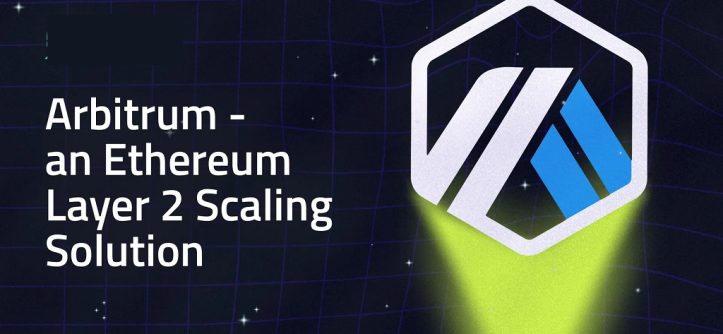The blockchain world is constantly evolving, with new technologies and platforms emerging all the time. One of the most promising developments in recent years has been the rise of layer-2 scaling solutions, which aim to improve the speed and efficiency of existing blockchains. Arbitrum is one such solution that has gained significant traction, offering a way to scale Ethereum without compromising on security or decentralization. But what does the future hold for Arbitrum? In this article, we’ll delve into the potential of Arbitrum in 2030, exploring its possible price, reviewing its key features, analyzing its pros and cons, and answering some frequently asked questions.
What is Arbitrum?
Before we gaze into the crystal ball, let’s recap what Arbitrum is. At its core, Arbitrum is an Optimistic Rollup solution for Ethereum. In simpler terms, it’s like a separate, faster highway built alongside the main Ethereum blockchain. Transactions are processed on this “highway” (Arbitrum) and then bundled together and submitted to the main Ethereum chain. This significantly reduces congestion and transaction fees on the Ethereum network.
Arbitrum Price Prediction 2030
Predicting the price of any cryptocurrency a decade out is a complex task, akin to predicting the weather patterns of a distant planet. However, we can analyze the potential factors that could influence Arbitrum’s price in 2030.
Factors Influencing Arbitrum’s Price
- Adoption of Ethereum: Arbitrum’s success is intrinsically linked to Ethereum’s growth. If Ethereum continues its dominance as the leading smart contract platform, the demand for scaling solutions like Arbitrum will likely surge.
- Competition: The layer-2 scaling landscape is becoming increasingly competitive, with solutions like Optimism, zkSync, and StarkNet vying for market share. Arbitrum’s ability to innovate and maintain its edge will be crucial.
- Technological Advancements: The blockchain space is notorious for rapid innovation. Breakthroughs in areas like zero-knowledge proofs or even newer scaling solutions could impact Arbitrum’s long-term prospects.
- Regulation: The regulatory environment surrounding cryptocurrencies remains uncertain. Favorable regulations could boost the entire market, including Arbitrum, while unfavorable ones could hinder growth.
- Network Effects: As more users and developers join the Arbitrum ecosystem, its value proposition strengthens. This network effect can create a positive feedback loop, driving further adoption and price appreciation.
Possible Price Scenarios
Given these factors, let’s explore some potential price scenarios for Arbitrum in 2030:
- Bullish Scenario: If Ethereum flourishes, Arbitrum maintains its leading position, and the crypto market experiences another bull run, we could see Arbitrum’s price reach unprecedented highs, potentially exceeding $1,000.
- Moderate Scenario: In a more moderate scenario, with steady growth in the Ethereum ecosystem and healthy competition among layer-2 solutions, Arbitrum could reach a price range of $200-$500.
- Bearish Scenario: If Ethereum faces significant challenges, or if Arbitrum fails to keep pace with competing solutions, its price could stagnate or even decline.
Disclaimer: It’s important to remember that these are just speculative scenarios. The actual price of Arbitrum in 2030 could be significantly different. Always conduct your own research and invest responsibly.
Arbitrum Reviews: A Look at its Strengths and Weaknesses
To better understand Arbitrum’s potential, let’s dive into a comprehensive review of its key features and functionalities.
Pros of Arbitrum
- Scalability: Arbitrum significantly enhances Ethereum’s scalability, enabling faster and cheaper transactions. This is crucial for the widespread adoption of decentralized applications (dApps).
- Security: As an Optimistic Rollup, Arbitrum inherits the security of the underlying Ethereum blockchain. This provides a high level of assurance for users and developers.
- Compatibility: Arbitrum is designed to be compatible with the Ethereum Virtual Machine (EVM), making it easy for developers to migrate existing Ethereum dApps to Arbitrum.
- Growing Ecosystem: The Arbitrum ecosystem is expanding rapidly, with a diverse range of projects and applications being built on the platform.
- Developer-Friendly: Arbitrum offers a robust set of tools and resources for developers, making it easier to build and deploy dApps.
Cons of Arbitrum
- Centralization Concerns: While Arbitrum is designed to be decentralized, there are some concerns about the current level of centralization in its governance and sequencer operations.
- Competition: As mentioned earlier, the layer-2 scaling space is highly competitive. Arbitrum faces challenges from other solutions that may offer different advantages.
- Dependence on Ethereum: Arbitrum’s success is ultimately tied to the success of Ethereum. Any issues or setbacks faced by Ethereum could impact Arbitrum.
- Complexity: While Arbitrum aims to simplify scaling, the underlying technology can still be complex for average users to understand.
Read More Also: Interesting facts about sheet metal and how it is used
Arbitrum FAQ
-
How does Arbitrum differ from other layer-2 solutions?
Arbitrum is an Optimistic Rollup, while other solutions like zkSync and StarkNet utilize different technologies like zero-knowledge proofs. Each approach has its own trade-offs in terms of scalability, security, and complexity.
-
Is Arbitrum safe?
Arbitrum inherits the security of the Ethereum mainnet, making it a relatively safe platform. However, like any blockchain technology, it’s not entirely immune to risks.
-
How can I use Arbitrum?
You can access the Arbitrum network through compatible wallets like MetaMask. You’ll need to bridge your ETH or other tokens from the Ethereum mainnet to the Arbitrum network to interact with dApps on Arbitrum.
-
What are some popular dApps on Arbitrum?
The Arbitrum ecosystem is home to a growing number of dApps, including decentralized exchanges (DEXs) like Uniswap and SushiSwap, lending platforms like Aave, and NFT marketplaces.
-
What is the future of Arbitrum?
The future of Arbitrum looks promising, with continued growth expected in its ecosystem and user base. However, it faces challenges from competing solutions and the evolving blockchain landscape.
Conclusion
Arbitrum has emerged as a leading layer-2 scaling solution for Ethereum, offering a viable path to improve the network’s speed and efficiency. While predicting its exact price in 2030 is impossible, the platform’s potential for growth is undeniable. By analyzing the factors that could influence its price, reviewing its strengths and weaknesses, and understanding its core functionalities, investors and users can make informed decisions about Arbitrum’s role in the future of decentralized technology. As the blockchain space continues to evolve, Arbitrum’s ability to adapt and innovate will be key to its long-term success.






Leave a Reply